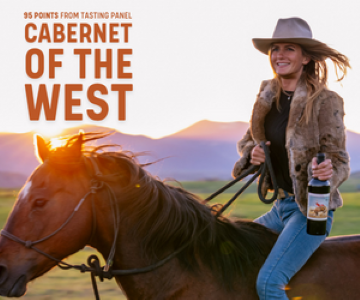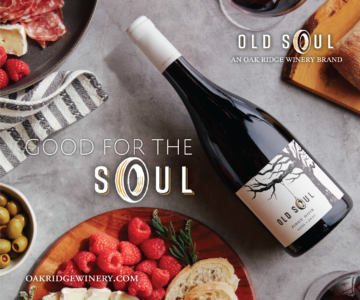This series highlights hospitality professionals who are responding to the industry crisis caused by the coronavirus pandemic in particularly creative, conscientious ways.
On February 26, San Francisco bistro The Morris was one of just 20 establishments across the country to be named a 2020 semifinalist for the James Beard Foundation’s Outstanding Wine Program award.
All of three weeks later, it was closing its dining-room doors, and founder Paul Einbund was facing the same unthinkable question every restaurateur from coast to coast has had to face since the COVID-19 outbreak began: What must we, and what must our business, do to survive?
Like the rest of us, he doesn’t yet have all the answers. “This is my first interview where I don’t know my job—I don’t know what I’m doing,” he admits. But he’s striving valiantly to figure it out.
Ruth Tobias: Since opening in 2017, The Morris has enjoyed numerous prestigious accolades both local and national, as have you for your work as its sommelier. Tell us about the place.
Paul Einbund: The Morris is named after my father, who hated his name and went by Mike—posthumous elbow to the ribs there—and the idea was to create a great neighborhood restaurant that would happen to have a Michelin three-star-worthy beverage program. We have a 63-page wine list; we’ve got three cellars onsite, three cellars offsite, and a cave in Paris. As a somm, though, I’ve always been obsessed with all liquids, not just wine: coffee, tea, the quality of water…My number-one love, next to my wife, is Chartreuse.
But none of that works unless the food is craveable. My chef-partner [Gavin Schmidt] and GM-partner [Konstantino Antonoglou] both worked with me at [legendary San Francisco destination] Coi many moons ago; we worked for years to get The Morris up and running, and we talked about how we wanted the food to be big plates like our smoked, roasted duck.
The duck remains a staple; we’re doing it to go now. A few times a year, we offer it unfinished, sending it home with instructions. When we first made the announcement for Easter, we literally received one order. After the COVID-19 restrictions, we reannounced the offer and sold out in two days. It has to hang for ten days, so between the Easter ducks and the regular ones, our chef freaked out. Ducks hanging everywhere. [Laughs.] But it was a great success and helped us a lot; we got so many gorgeous photos from people who [ordered it]. I’m thinking about doing more things like that during this period.
RT: So in other words, you’ve pivoted to the takeout model. How are you managing that from a practical standpoint?
PE: I think it was the day before or two days before California announced the shelter-in-place rules that we were saying, “We need to close. Even if we were to get busier, this isn’t safe.”
So we did, and It was crushing, furloughing 75% of the staff. I’m talking about laying off 15 of 21 people, not hundreds like some people have had to. Nevertheless, it was one of the most painful decisions I’ve had to make; I really love the staff. And this is the first time I’m the major partner in a restaurant. To be able to walk into a bustling place and see that things are flowing, that I’m employing these people who can pay their bills, is really satisfying. Everything was working. We’d just started paying off investors last year. We were going in the right direction. Now this happens.
So I had the idea of reaching out to our investors, who are very much family. Except for one in London, everybody else is at the restaurant on a regular basis. I said, “Here’s what’s going on: I’m laying off staff. If you all have the ability to donate some money, I would divide it equally among the laid-off staff.” Maybe it wouldn’t be enough to pay rent, but at least it would be a little something.
Then one called up and said he’d been going to donate to a charity, but instead he was going to put money into an account and [make] microloans available to anyone who needs them on a one-on-one basis, zero interest. I reach out to the staff a couple of times a week and make sure they know this. When I start to freak out, I forget everything, so I want to make sure they remember we’re here. We also started a GoFundMe. We asked for $20,000, reached that in 24 hours, and now we’re at $30,000, [to be] divided between the 15 employees we lost. And our landlord is awesome; the rent is deferred.
All that’s allowing us to [offer takeout and] tread water; our head is above the water for sure. We’re also serving meals for at-risk communities and healthcare workers three times a week—that is definitely one of the guiding factors in staying open. But if we were to be paying rent right now, we wouldn’t be able to do this, so as soon as the landlord’s like, “All right, time to pay up,” we’ll be in trouble, unless some of these grants and loans come in.
RT: We’re all stumbling in the dark for sure. How have you handled things from a beverage perspective—what’s your takeout program like?
PE: Normally I have a beverage director and junior somms, and now I have none. I’m eager to get them back, but right now it’s better for them to be on unemployment.
But it’s also much more ideal [for customers] to be able to talk to a somm. So much of our clientele knows us; many of our regulars are still dining at The Morris two times a week. That is huge. So they’ll say, “Have Paul choose two bottles of red,” giving me a price point and letting me choose wines. Then I’ll send them options to pair with their menu.
We’re definitely not set up to be a wine shop. All the wines at The Morris are pretty much allocated, rare, hard-to-get; we’re at an advantage because we have a huge inventory, but not a lot of any one SKU, so we’re going to be running out. One regular, she’s so sweet, she said, “I’ll take a case of this, a case of this, and a case of that.” I had to say, “Here’s the problem: I was allocated six of these for the year, so I can give you two.” I’m having to make these hard decisions because there is no cash flow; bringing more [wine] in is dangerous because I’m still paying bills from before.
For cocktails, we went with the Mason jar approach [to sell] double cocktails undiluted, and then we have a little instruction sheet telling them [how to dilute] in a super-quick, not nerdy way: “Here’s what I look for.” Every liquid that you get at The Morris should be really perfect, from the ingredients to the technique.
Our signature cocktail is called the Chartreuse Slushy. It’s my version of a drink served at this Chartreuse party in Spain that I’ve never been to, but I created what I imagine it to be: tart lemonade, palm sugar, and Chartreuse, blended. It’s freaking delicious and has been working so well on the to-go front. I also bottle-age cocktails, but you don’t want to put the bitters in there or any fresh ingredients that are going to go bad—you bottle-age the spirit and then add the [rest] à la minute.
RT: That’s a lot to juggle, but to complicate matters further, you had just launched an ambitious project with the owners of Michelin-starred restaurant Nico when the pandemic began. What’s happening there?
PE: Last year [Nico owners Nicolas and Andrea Delaroque] got an incredibly talented young cook, Jordan Guevara. They have a four-year-old daughter, and they started thinking they wanted to take her to France to live with Nico’s family, immerse her in French culture. They offered to sell to him; he said “Thank you, but I’m too young.” Then they offered it to me, and I said, “I’m tempted, but what are you going to do when you’re back in a year?” I threw out this stupid idea: “Why don’t we just have me babysit Nico for a year?” They said, “That’s a terrible idea,” and I said, “You’re right, it’s a terrible idea.” Then they came back and said, “Let’s talk.”
The plan was that they would hand the restaurant over to us in January, and in April or May they would move to France. My team was going to take it over and call it Gap Year; Jordan would be the exec chef. His vision is super–high end, super-fancy. But it’s a small restaurant that isn’t built for Michelin three-star execution, so we were going to make it more playful, more relaxed and mellow.
Now Gap Year at Nico has pivoted to doing prepared meal kits; we created a small wine list that has retail pricing. [But beyond that], we don’t really know what we’re gonna do now. [The Delaroques] are still here—that was very lucky. If I had to oversee two restaurants in this transition, I don’t know how I’d do it. Making uninformed decisions for The Morris is one thing, but making uninformed decisions for Nico and Andrea when they’re paying for everything is another.
RT: Speaking of stressful decisions, what are your thoughts on returning to business as usual?
PE: Is it possible for most restaurants to reopen at 50% capacity? The answer is no. What we do is going to depend on how we feel. You’ve got to look at what’s going on: Are people feeling safe again, or are they scared to death but just need to leave the house? I’m thinking it’ll lean toward the latter. Besides . . . the staff who need the work most right now take public transport, and how safe is that? It’s really nerve-wracking.
We’re a small, 40-seat restaurant, but we started outdoor seating toward the end of last year, and it was a game changer, adding 50% to our dining-room capacity. So we’re thinking we’ll allow very sporadic seating inside [as well as] use a larger outdoor seating area than normal and super-space the outdoor tables.
Then we’re going to have to do one of the things we don’t [usually] do in hospitality, which is be direct. We’ll have to tell each guest, “It’s going to be a leisurely dinner, because we are understaffed on purpose,” and ask them, “When do you plan to leave?” That dialogue is going to be super-important.—Ruth Tobias

